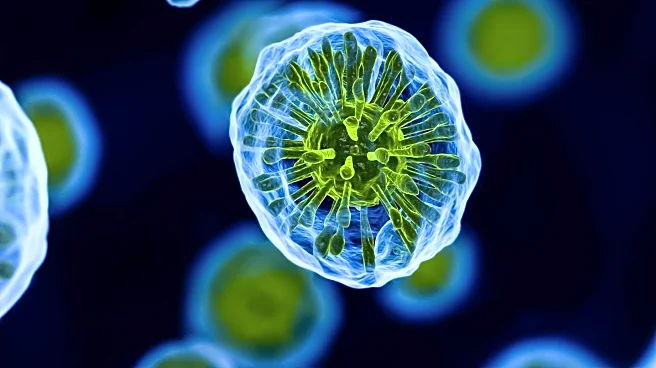What's Happening?
A study conducted by the University of Tokyo, published in Nature Cell Biology, reveals a potential link between graying hair and a natural defense against cancer. Researchers investigated how melanocyte stem cells (McSCs), responsible for hair pigmentation,
react to DNA damage. The study suggests that the process leading to gray hair may be a biological mechanism that reduces cancer risk, particularly melanoma. McSCs, which reside in hair follicles, are affected by DNA damage, a factor in aging and cancer. The findings indicate that graying hair might be an adaptive response to mitigate the risk of skin cancer by altering stem cell behavior.
Why It's Important?
This research provides new insights into the relationship between aging, DNA damage, and cancer prevention. Understanding the biological processes behind hair graying could lead to advancements in cancer research, particularly in developing strategies to harness natural defense mechanisms against cancer. The study emphasizes the importance of stem cell research in uncovering potential cancer prevention methods, offering hope for innovative treatments and interventions. It also challenges the perception of graying hair as merely a cosmetic concern, highlighting its potential role in health and disease prevention.
What's Next?
Future research may focus on further exploring the mechanisms by which McSCs respond to DNA damage and their role in cancer prevention. Scientists could investigate how these findings can be applied to develop new cancer therapies or preventive measures. Additionally, public health campaigns might aim to educate the public on the health implications of graying hair, promoting awareness of its potential protective benefits.
Beyond the Headlines
The study opens discussions on the broader implications of stem cell behavior in aging and disease prevention. It highlights the complex interplay between genetic factors and environmental influences in health, encouraging a reevaluation of aging processes and their potential benefits. This research could lead to a shift in how aging and its associated changes are perceived, emphasizing their role in maintaining health and preventing disease.














